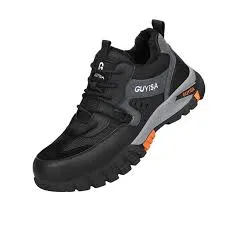fire fighting safety helmet products
The Importance of Fire Fighting Safety Helmets
Firefighting is one of the most dangerous professions in the world, requiring brave and skilled individuals to combat the element that has caused countless tragedies throughout history. Among the essential components of a firefighter's gear, safety helmets stand out as a critical line of defense against various hazards encountered during fire emergencies. Understanding the importance of fire fighting safety helmets, including their features, technology, and compliance with safety standards, is paramount for protecting those who risk their lives for the greater good.
Key Features of Fire Fighting Helmets
Fire fighting safety helmets are designed to protect the head from heat, falling debris, and blunt force trauma. A standard firefighting helmet is crafted from high-temperature-resistant materials, such as thermoplastics or fiberglass composites, allowing them to withstand direct exposure to flames and extreme heat. These helmets often come equipped with a thick outer shell and a heat-resistant inner liner that helps absorb impact and dissipate heat.
Additionally, modern firefighting helmets are engineered with advanced features such as face shields and visors, providing eye protection against smoke and flying debris. Many helmets also incorporate a high-visibility color scheme and reflective strips to ensure that firefighters can be easily seen in low-light conditions, enhancing their safety while combating fires.
Technological Innovations
In recent years, the development of technology in fire fighting safety helmets has progressed significantly. Innovations such as thermal imaging cameras can now be integrated into helmets, allowing firefighters to see through smoke and locate victims or hotspots more effectively. Some helmets even feature built-in communication systems, facilitating clear communication among team members during chaotic situations, which is vital for operational efficiency and safety.
Another significant advancement is the incorporation of cooling systems within helmets. These systems help regulate temperature, allowing firefighters to maintain a level of comfort while working in extreme conditions, thus enhancing their endurance and response capabilities.
fire fighting safety helmet products

Compliance with Safety Standards
Fire fighting safety helmets must adhere to rigorous safety standards to be deemed suitable for use. Various organizations, such as the National Fire Protection Association (NFPA) in the United States and the European Committee for Standardization (CEN) in Europe, set clear guidelines for helmet construction and performance. These standards evaluate the helmets' ability to withstand impacts, temperatures, and other environmental factors that firefighters may encounter.
Purchasing helmets that comply with these standards is critical for fire departments to ensure the safety of their personnel. In addition, regular inspection and maintenance of helmets are necessary to prolong their lifespan and effectiveness. Fire departments should also provide training to firefighters about proper helmet usage and maintenance, to enhance their understanding of protective gear and its significance.
The Role of Education and Training
In addition to having the right equipment, education and training play crucial roles in ensuring firefighter safety. Fire departments often conduct training sessions that emphasize the importance of wearing helmets and other personal protective equipment (PPE) at all times during emergency operations. This training instills a culture of safety and responsibility among firefighters, reinforcing the message that their life-saving efforts should not compromise their own safety.
Moreover, ongoing education about new technologies and advancements in safety gear helps firefighters stay current with best practices and innovations that could enhance their performance on the job.
Conclusion
Fire fighting safety helmets are more than just a piece of equipment; they are a vital component of a firefighter's protective ensemble that can mean the difference between life and death. With constant advancements in technology and adherence to safety standards, these helmets are becoming increasingly robust and effective at safeguarding firefighters during their perilous work. By prioritizing proper use, maintenance, and education around these helmets, fire departments can help ensure that those who bravely confront the dangers of fire can do so as safely as possible. Investing in quality safety helmets not only protects firefighters but also enables them to perform their duties with greater efficiency and confidence.
-
Aero Safety Helmet - OEM Gomax Aero Adult Safety Helmet, Affordable Protection for Cyclists
NewsJun.10,2025
-
Buy uvex pheos abs alpine safety helmet – OEM & Cheap Options from China Supplier
NewsJun.10,2025
-
Volman Safety Helmet - Premium Durable Protection for Industrial Workers
NewsJun.10,2025
-
Top Safety Helmet Suppliers in UAE Reliable Brands & Affordability
NewsJun.10,2025
-
Affordable Safety Helmet with Visor & Earmuffs - OEM China Supply
NewsJun.10,2025
-
Affordable Safety Clothing in Deer Park, TX Cheap & OEM Options
NewsJun.09,2025
